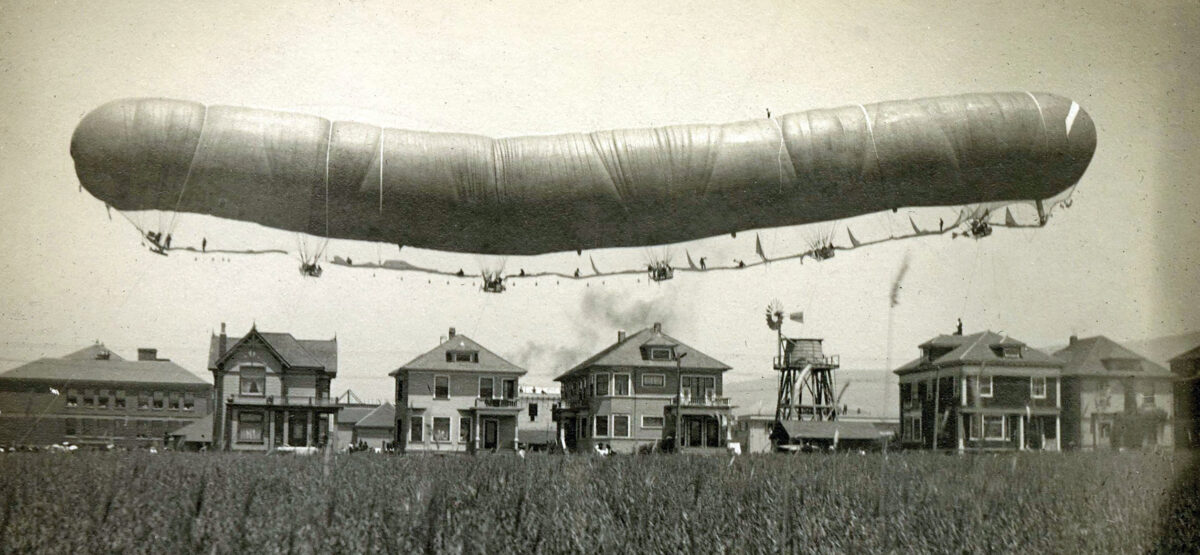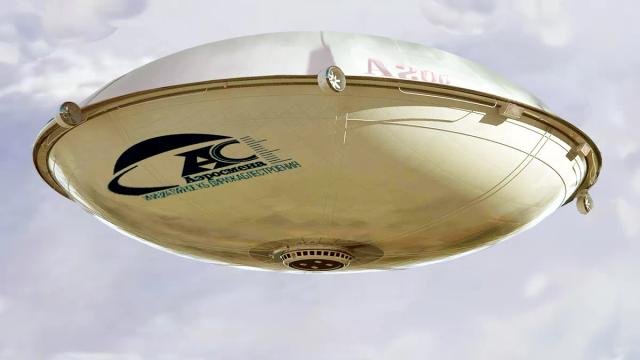ramonmercado
CyberPunk
- Joined
- Aug 19, 2003
- Messages
- 58,240
- Location
- Eblana
A bit of forgotten history.

On May 23, 1908, Morrell took the airship aloft. The sag visible in the middle of the envelope is a sign of impending trouble. The craft managed to reach a height of about 150 feet before failing completely and crashing to the ground. (HistoryNet Archives)
Was San Francisco’s John Morrell a stock-swindling grifter or a deluded visionary? In 1906, Morrell, president of a business venture he called the National Airship Company, announced plans to build a fleet of airships to link America’s cities. It was an enticing dream: dirigibles, nearly a quarter of a mile long, that could cross the country in a day or reach London in 24 hours. A San Francisco businessman could fly to New York for lunch and be back home in time for bed. The railroads were dead, Morrell promised. Air travel was the future.
Although Morrell’s vision outpaced early 20th-century technology, he attracted numerous investors in San Francisco. After all, this was the hometown of August Greth and Thomas Baldwin, the innovators behind America’s first dirigibles. Greth had taken his California Eagle aloft in October 1903; Baldwin had flown his California Arrow the following August. Perhaps Morrell could build on their success.
In August 1907, Morrell unveiled his first airship. Named Ariel, it was 600 feet long and driven by five automobile engines. Before the maiden flight, an October gale snapped the balloon’s tether lines and drove it across San Francisco Bay. The trees of Fair Oaks, California, shredded the fragile fabric and destroyed the airship.
Dismayed but undefeated, Morrell started work on a replacement. At the same time, the National Airship Company opened a sales office in Portland, Oregon. Advertisements in the Oregon Daily Journal announced that the company planned to have its new dirigible in service by April 1, 1908. The airship would fly the San Francisco to Portland route, carrying 100 passengers and 30 tons of mail. Investors purchasing stock at the bargain rate of ten cents a share could expect exponential returns.
The company’s ambitious claims attracted the interest of the federal government, and the U.S. Post Office opened an investigation into whether Morrell’s activities constituted mail fraud. Meanwhile, a disgruntled investor named S.L. Jacobs filed a complaint against Morrell in San Francisco Police Court, claiming that he had violated section 564 of the California Penal Code—making false statements about his company to investors. Morrell was arrested and released on bail while awaiting a trial. ...
https://www.historynet.com/was-this...ock-swindling-grifter-or-a-deluded-visionary/
WAS THIS DIRIGIBLE BUILDER A STOCK-SWINDLING GRIFTER OR A DELUDED VISIONARY?
In 1908, John Morrell's plans all came "crashing" down.
On May 23, 1908, Morrell took the airship aloft. The sag visible in the middle of the envelope is a sign of impending trouble. The craft managed to reach a height of about 150 feet before failing completely and crashing to the ground. (HistoryNet Archives)
Was San Francisco’s John Morrell a stock-swindling grifter or a deluded visionary? In 1906, Morrell, president of a business venture he called the National Airship Company, announced plans to build a fleet of airships to link America’s cities. It was an enticing dream: dirigibles, nearly a quarter of a mile long, that could cross the country in a day or reach London in 24 hours. A San Francisco businessman could fly to New York for lunch and be back home in time for bed. The railroads were dead, Morrell promised. Air travel was the future.
Although Morrell’s vision outpaced early 20th-century technology, he attracted numerous investors in San Francisco. After all, this was the hometown of August Greth and Thomas Baldwin, the innovators behind America’s first dirigibles. Greth had taken his California Eagle aloft in October 1903; Baldwin had flown his California Arrow the following August. Perhaps Morrell could build on their success.
In August 1907, Morrell unveiled his first airship. Named Ariel, it was 600 feet long and driven by five automobile engines. Before the maiden flight, an October gale snapped the balloon’s tether lines and drove it across San Francisco Bay. The trees of Fair Oaks, California, shredded the fragile fabric and destroyed the airship.
Dismayed but undefeated, Morrell started work on a replacement. At the same time, the National Airship Company opened a sales office in Portland, Oregon. Advertisements in the Oregon Daily Journal announced that the company planned to have its new dirigible in service by April 1, 1908. The airship would fly the San Francisco to Portland route, carrying 100 passengers and 30 tons of mail. Investors purchasing stock at the bargain rate of ten cents a share could expect exponential returns.
The company’s ambitious claims attracted the interest of the federal government, and the U.S. Post Office opened an investigation into whether Morrell’s activities constituted mail fraud. Meanwhile, a disgruntled investor named S.L. Jacobs filed a complaint against Morrell in San Francisco Police Court, claiming that he had violated section 564 of the California Penal Code—making false statements about his company to investors. Morrell was arrested and released on bail while awaiting a trial. ...
https://www.historynet.com/was-this...ock-swindling-grifter-or-a-deluded-visionary/



